39 how to read nutrition labels carbs
Reading food labels: Tips if you have diabetes - Mayo Clinic The serving sizes listed on food labels may be different from the serving sizes in your meal plan. If you eat twice the serving size listed on the label, you also double the calories, fat, carbohydrates, protein, sodium and other ingredients. Consider your daily calorie goals. The same goes for the Daily Value listed on food labels. PDF How Do I Understand the "Nutrition Facts" Label? a day, this is 120 calories or less, or about 13 grams of saturated fat. Most foods in the grocery store have a Nutrition Facts label and ingredient list. When you go grocery shopping, take time to read the Nutrition Facts labels on the foods you purchase. Compare the nutrients and calories in one food to those in another. The
Reading Food Labels for Carbohydrates - dummies Food labels are a fabulous resource for finding out how many carbohydrates are in your foods. You can use these labels to compare the carbohydrate content of different products and track the amount of carbohydrate you eat. Reading food labels is a vital skill for anyone who counts carbohydrates.

How to read nutrition labels carbs
How to Read a Nutrition Label on the Keto Diet - Hip2Keto There are two methods of counting carbs, total and net: Counting using the total is pretty self-explanatory where the total number at the top is what you get. For net carbs, you subtract the dietary fiber count and sugar alcohols (if any) from the total carbs to give you the net carbs of the food in question. How to Read a Food Label - Atkins Here's what you should be aware of on a nutrition label: Serving size (if you have more than one serving, be sure to add in the carbs) Total carbohydrates expressed in grams Amount of dietary fiber expressed in grams (subtract from total number of carbs to get the net carb count) Sugars expressed in grams How to Read Nutrition Labels - Diabetes Strong The %DV refers to the FDA guidelines for daily calorie consumption. Since they have to generalize, they have chosen 2,000 calories as the DV baseline, which consist of 50g protein, 65g fat, 20g saturated fat, 300g carbohydrates, and 25g fibers. If you have read any of my posts about nutrition, you will know I don't really follow the FDA ...
How to read nutrition labels carbs. Learning To Read Labels :: Diabetes Education Online On a nutrition food label, subtract the fiber from the total carbohydrate amount. When you read food labels, the grams of sugar are already included in the total carbohydrate amount, so you do not need to count this sugar amount separately. The grams of sugar listed include both natural sugars, from fruit or milk, and added sugars. Understanding Food Nutrition Labels | American Heart ... 1 - Start with the serving information at the top. This will tell you the size of a single serving and the total number of servings per container (package). 2 - Next, check total calories per serving and container. Pay attention to the calories per serving and how many calories you're really consuming if you eat the whole package. How To Read Food and Beverage Labels | National Institute ... How to read the Nutrition Facts label. The U.S. Food and Drug Administration (FDA) requires a Nutrition Facts label on most packaged foods and beverages. At the top of the Nutrition Facts label, you will find the total number of servings in the container and the food or beverage's serving size. How to Calculate Net Carbs & Read Nutrition Labels — Maria ... How to Calculate Net Carbs & Read Nutrition Labels When skimming nutrition labels, a low-carb or keto diet might sound daunting. It may seem impossible to get by on 20-50 grams of carbs, but it's important to remember any references to carbs refers to net carbs not total carbs.
Carb vs. Sugar: How to Understand Nutrition Labels 21 Sept 2017 — Carbohydrates are actually comprised of three nutrients: carbohydrates, fiber, and sugar. You may, and will see, foods that are very low in “ ... How to Read Carbohydrates on Nutrition Labels - Optimal ... -Sugars -Dietary fibre The top carbohydrates row is the total amount of carbs present. Made up of all the sugars, dietary fibre and starch, which is the remaining amount after the sugar and fibre. So in the above muesli label we have 51.8g of carbs per 100g. 12.7g is sugar 7.9g is fibre Which means that 31.2g is starch (51.8 - 12.7 - 7.9) This Is How to Read a Nutrition Facts Label on the Keto ... Each nutrient listed on the label refers to the amount of that label contained in one serving, which is usually not the entire package. For instance, if "Total Carbohydrates" are listed as 10 grams (10 g), that's accurate for one serving. Decoding Diabetes: How to Read Nutrition Labels | Accu-Chek The calories in the foods you eat are made up of fat, protein, and carbohydrates. Nutrition labels are typically made based on the assumption that you have a daily diet of 2,000 calories (kilocalories). Some labels will have a footnote that expand on this concept, providing numbers for both 2,000 and 2,500-calorie (kilocalorie) diets. Nutrients.
How to Understand and Use the Nutrition Facts Label | FDA The information in the main or top section (see #1-4) of the sample nutrition label (below) can vary with each food and beverage product; it contains product-specific information (serving size, calories, and nutrient information). The bottom section contains a footnote that explains the % Daily Value and gives the number of calories used for genera... How To Read Nutrition Labels For Carbs - Montalvospirit For net carbs, you subtract the dietary fiber count and sugar alcohols (if any) from the total carbs to give you the net carbs of the food in question. How many grams of carbs is 30%? 2 ounces of Bread x 15 grams of carbohydrate per ounce equals 30 grams of carbohydrate. 4. So that means your bread slice is 30 grams of carbohydrate. How to Read Food Labels | Your Low Carb Hub The below label shows there are 4.3g of carbs in a 15ml serving size which is equivalent to one tablespoon. 3.4g of this is sugar. There is 22.7g of sugar in 100ml, that's 5.6 teaspoons of sugar. The World Health Organisation (WHO) recommends no more than 5-10 teaspoons of added sugar in an entire day. Be aware of hidden sugars. How to read and understand a nutrition label - CNET 20 Aug 2019 — Because of that, you can subtract the fiber grams from the carb grams in a food, and you're left with the carbohydrate grams that will impact ...

How to Read Nutrition Labels on The Low Carb Ketogenic Diet - Mee Le, PharmD | Nutrition labels ...
How to Read Nutrition Facts Labels the Right Way - GoodRx Understanding how to read a Nutrition Facts label is an important skill when it comes to eating healthfully. Some nutrients on a label are important to get more of, while others should be limited. It's also important to look at the serving size and ingredients in order to make healthy choices.
How To Figure Out The Carbs On Nutrition Labels Mar 01, 2011 · Sugars gives you the total amount of carbohydrate, in grams, from naturally occurring sugars like lactose (milk sugar) and fructose (fruit sugar) PLUS any added sugars like high fructose corn syrup, brown and white sugar, cane juice, etc. Added sugars are the sugars and syrups added to foods during processing or preparation.
How to Read a Food Label to Make Sure It's Keto in 3 Easy ... Total Carbs or Net Carbs How to calculate net carbs Subtract Dietary Fiber and Sugar Alcohols (if any) from the Total Carbohydrate. *Total Carbohydrate minus Dietary Fiber, minus Sugar Alcohol (if any) = Net Carbs Total Carbohydrate ( 4 grams) - Dietary Fiber ( 1 gram) = 3 gram s Net Carbs
How to Use the Nutrition Facts Label - Diet Doctor Check the grams of sugar on the nutrition facts label (circled in pink). You'll find this under the total carbohydrate grams, right after the fiber. The "sugars" number includes both naturally occurring sugars (like the fructose found in lemon juice) and added sugars (like the sugar or corn syrup added to some salad dressings).
Low Carb Guide to Understanding Nutrition Labels - Virta Health The carbohydrate count is given as total grams, and then broken down into carbs from fiber and sugar. Focus on total carbohydrate. Sugar should be zero as often as possible (1-2g at most). Fiber is a carb and should be included in your total for the day (initially 30g or less). Again, pay attention to the serving size.
How to Read Nutrition Facts Label | Food Network Healthy ... For a crash course on the Nutrition Facts label and how to decipher what it says, keep on reading. Health Claims Are There to Lure Us In First, we have to scrutinize the claims on the front of any ...

The 61 names of sugar – Read the food labels for hidden sugar | Reading food labels, Food labels ...
Calories on the New Nutrition Facts Label | FDA 2,000 calories a day is used as a general guide for nutrition advice, but your calorie needs may be higher or lower depending on your age, sex, height, weight, and physical activity level. Eating ...
How To Read Nutrition Labels (Like a Pro) - Ditch The Carbs Firstly you need to understand the difference between total and net carbs. TOTAL CARBS = sugars + starches +fibre NET CARBS = total carbs - fibre Carbohydrates will be on the nutrition label are often broken down into carbohydrates, sugars, starch, and fiber. However, each brand may display its nutritional contents differently.
How to Read Carbohydrates on Food Labels - GlycoLeap Nov 30, 2018 · When learning how to read carbohydrates on food labels, always remember that 1 serving of carbohydrate is equal to 15 g of carbohydrates. If you want to have a snack, it is recommended to eat no more than 1 to 2 servings of carbohydrates in one sitting. That would be around 15 to 30 g of carbohydrates. Snack = 15 – 30 g of carbohydrate
How to Read the New Food Label - The Johns Hopkins Patient ... If you read food labels, you have noticed that Nutrition Facts label got an update. This is the first major change since 1994. Larger food manufactures have already rolled out the updated Nutrition Facts label. All food products should have the new label by January 2021.
Reading Nutrition Labels - Cronometer Carbohydrates including fibre (the carbohydrate value listed on Canadian labels is NOT Net Carbs). DRI vs. %DV. A lot of people confuse DRIs with %DV. The %DV that you see on nutrition labels is a standardized value used for nutrition labels to help people better understand amounts on labels.
Reading Food Labels | ADA - American Diabetes Association We'll cover the basics so that these labels make shopping easier for you. Get started · Understanding Carbs.
How to Read Nutrition Labels - Diabetes Strong The %DV refers to the FDA guidelines for daily calorie consumption. Since they have to generalize, they have chosen 2,000 calories as the DV baseline, which consist of 50g protein, 65g fat, 20g saturated fat, 300g carbohydrates, and 25g fibers. If you have read any of my posts about nutrition, you will know I don't really follow the FDA ...
How to Read a Food Label - Atkins Here's what you should be aware of on a nutrition label: Serving size (if you have more than one serving, be sure to add in the carbs) Total carbohydrates expressed in grams Amount of dietary fiber expressed in grams (subtract from total number of carbs to get the net carb count) Sugars expressed in grams
How to Read a Nutrition Label on the Keto Diet - Hip2Keto There are two methods of counting carbs, total and net: Counting using the total is pretty self-explanatory where the total number at the top is what you get. For net carbs, you subtract the dietary fiber count and sugar alcohols (if any) from the total carbs to give you the net carbs of the food in question.
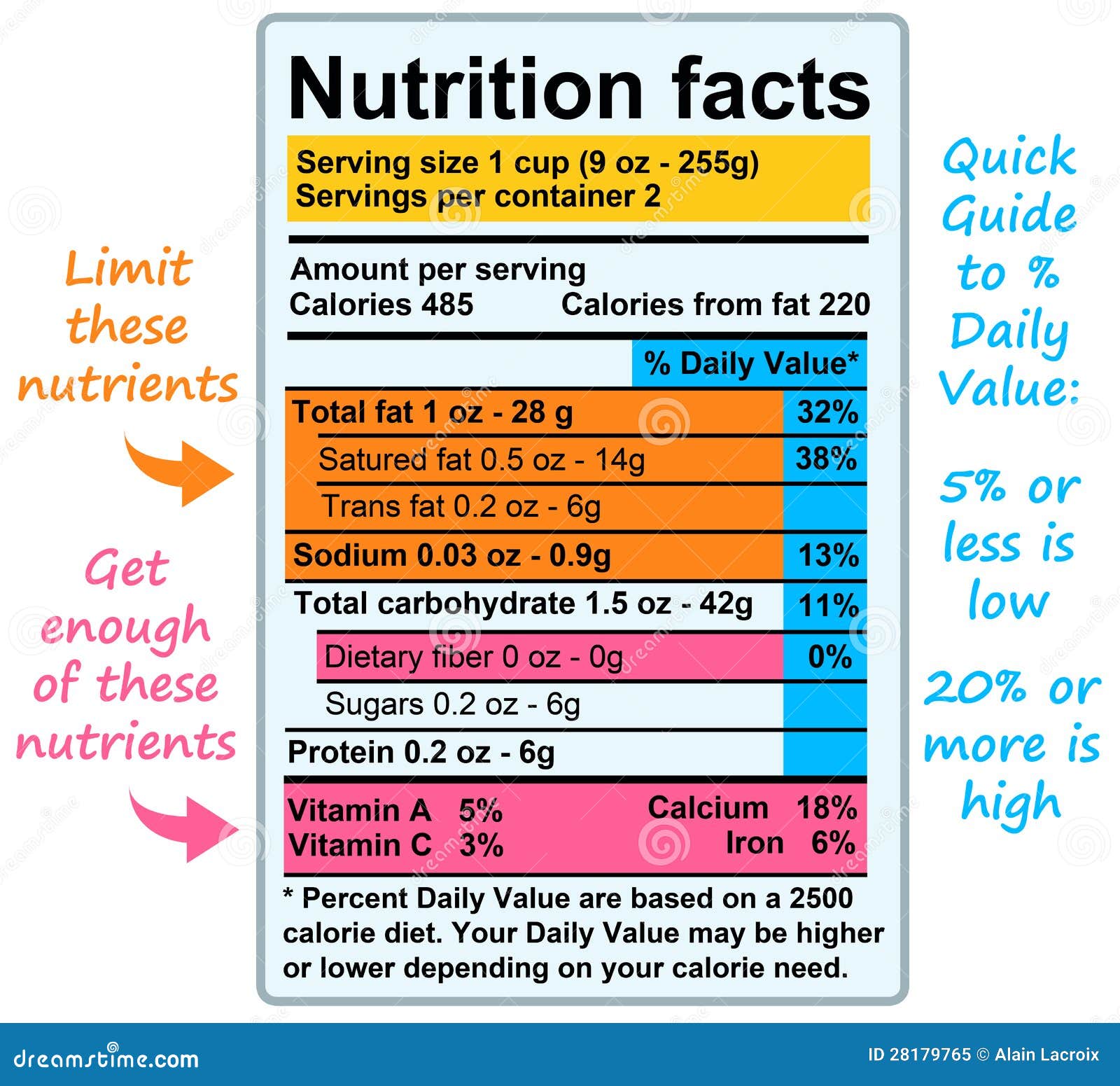
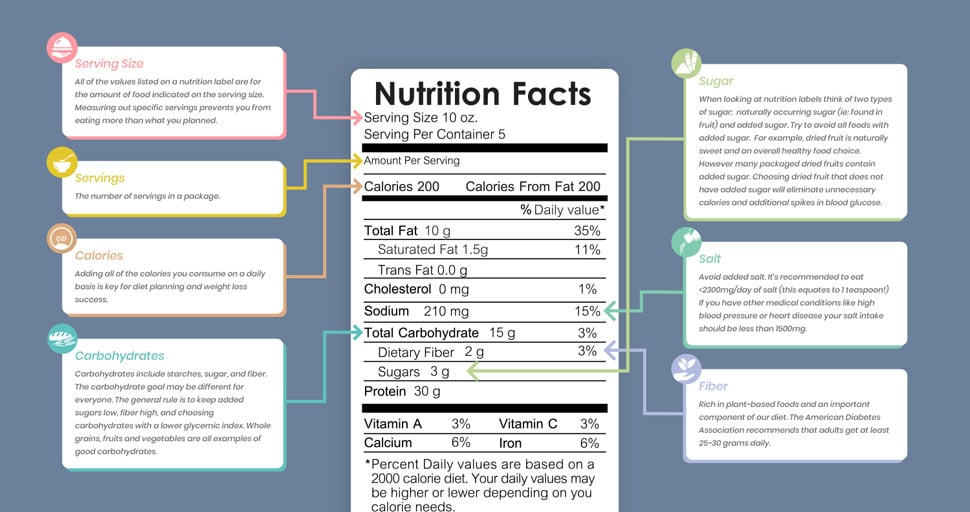

:max_bytes(150000):strip_icc()/LabelA6-56a5c0f63df78cf77289c1d4.jpg)


:max_bytes(150000):strip_icc()/LabelA5-56a5c0f63df78cf77289c1e0.jpg)
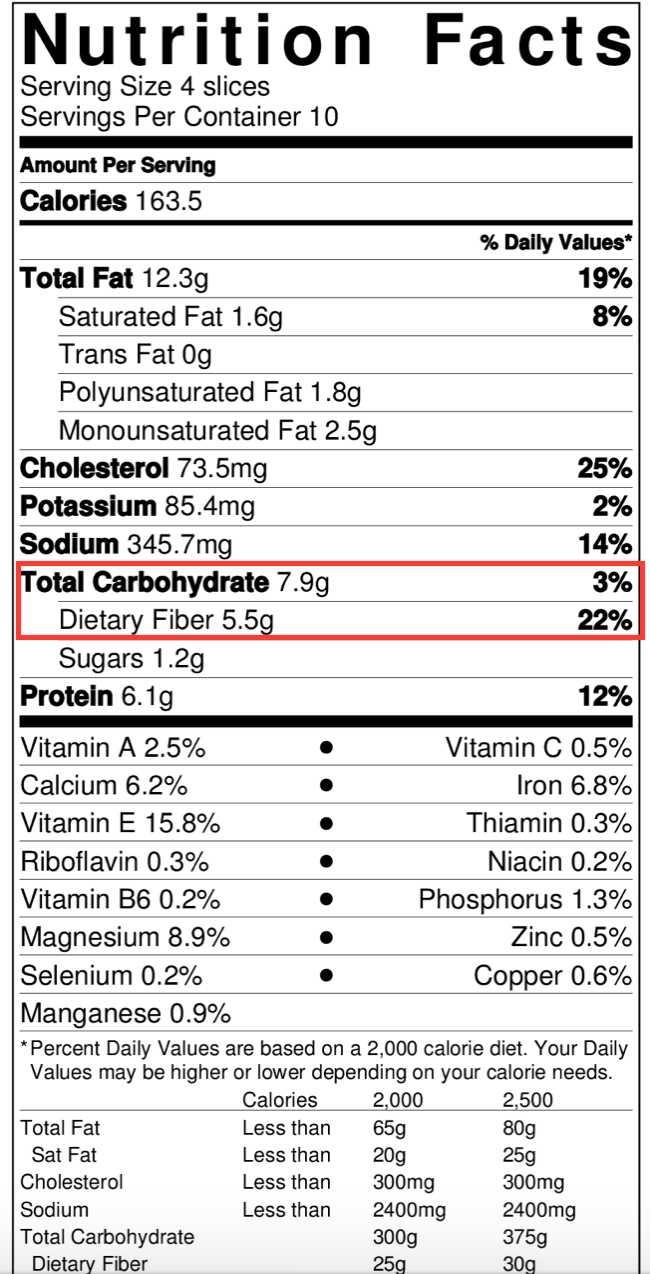
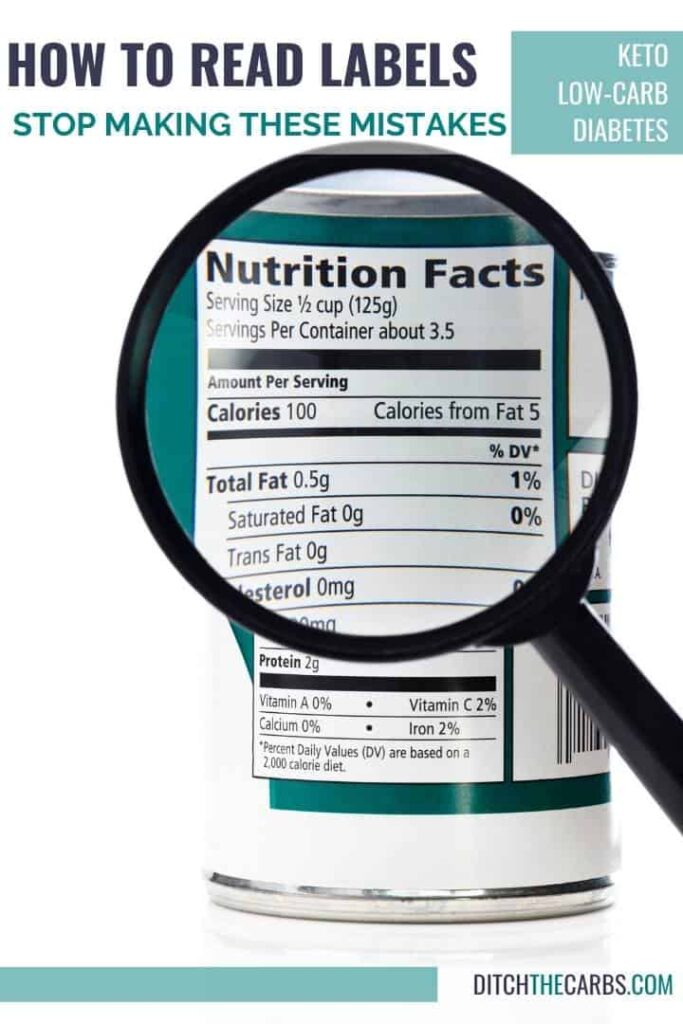
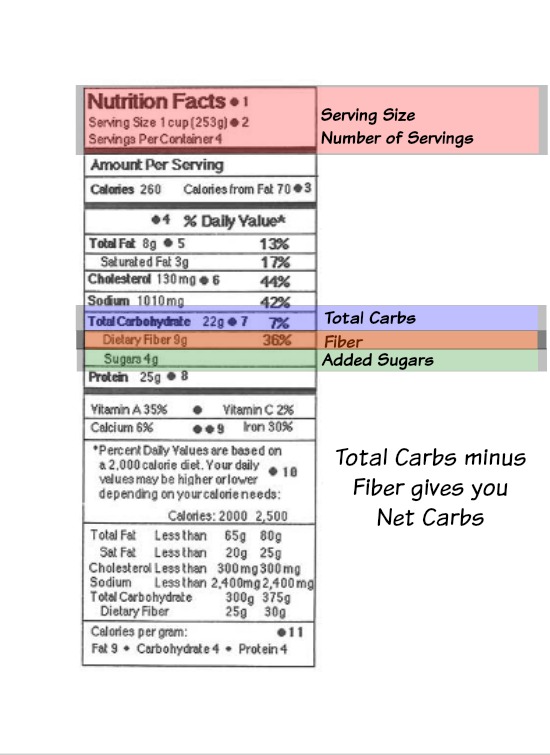
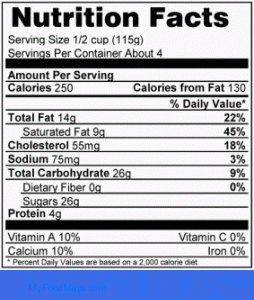

Post a Comment for "39 how to read nutrition labels carbs"